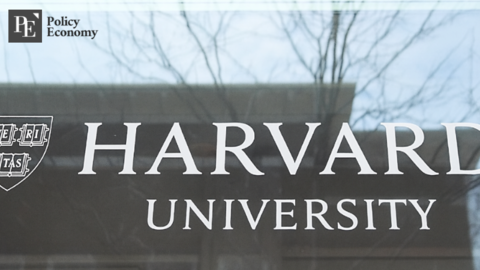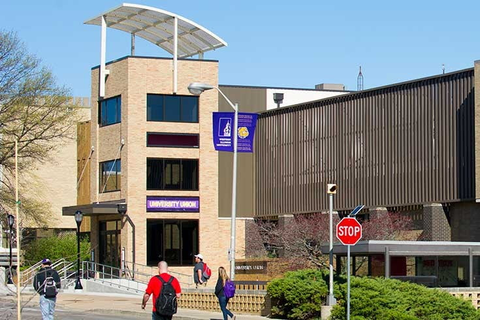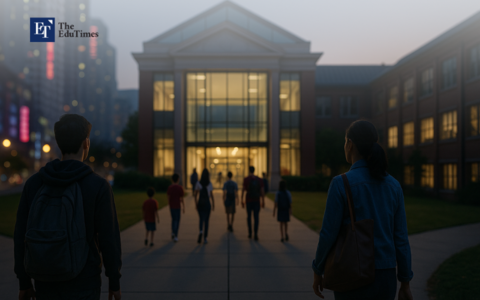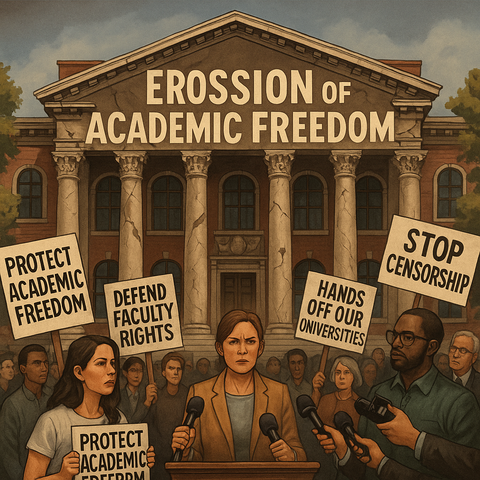The Urgent Need for Flexibility in Higher Education: Overcoming Resistance and Financial Strain
Input
Modified
The Struggle for Adaptation: Universities Facing Financial and Structural Challenges Resistance to Change: Bureaucratic Hurdles and Institutional Barriers The Path Forward: Why Universities Must Embrace Flexibility for Survival

The Struggle for Adaptation: Universities Facing Financial and Structural Challenges
Higher education faces financial strain and shifting demands, pushing universities to adopt flexible learning models. However, bureaucratic hurdles and resistance to change threaten their ability to adapt and remain sustainable.
Our world is characterized by a high degree of disruption, including ongoing conflicts, political instability, trade barriers, fake news, social media, influencers, and artificial intelligence. While endeavoring to preserve their knowledge-based foundations and academic freedom in this constantly changing environment, higher education institutions encounter substantial obstacles in their pursuit. In the past six years, these institutions have faced unforeseen disruptions, such as the COVID-19 pandemic, the proliferation of micro-credentials, and advancements in artificial intelligence, such as ChatGPT. Furthermore, universities worldwide are subject to heightened political scrutiny and government regulations.
In the 2024 Trends report from the European University Association (EUA), the financial constraints that numerous higher education institutions have faced are underscored. Over the past five years, funding has been consistently low or declining. Underfunding continues to pose a significant challenge in improving the quality of education and instruction.
The Struggle for Flexibility
Universities are currently preoccupied with the challenge of adapting their courses and programs to accommodate evolving demographics and demands. Universities have historically been conservative institutions that prioritize the voices of their professors and maintain a robust academic leadership. Nevertheless, a change in perspective and structure is necessary to accommodate contemporary requirements.
Higher education in Norway is presently undergoing a significant amount of unrest. The threat of diminished government funding and a decrease in the number of applications for higher education is substantial. The government's emphasis on continuous learning and decentralized education poses an additional challenge for universities that have historically operated under campus-based education models.
One of the strategic objectives is to increase revenue by recruiting more mature pupils. In order to accomplish this, it is imperative that we provide more adaptable study programs. This is consistent with the university's overarching strategy: "Enhance the quality of continuing education and training programs by engaging in dialogue with industry, business, and society." Nevertheless, the implementation of flexibility in higher education is not as simple as one might anticipate.
The Continuous Struggle for Change
In recent years, universities have implemented initiatives to create education programs that are adaptable to the requirements of a wide range of their students. A flexible engineering education program, which is expected to commence in the autumn of 2025, will receive NOK5.4 million (US$479,000) in internal and external funding. Two regional study centers are supporting student recruitment, learning facilitation, and industry connections in this initiative, which is a collaboration between educational institutions and society.
The program is intended to be delivered digitally, enabling students who are employed to continue working while concurrently studying from their hometowns. Nevertheless, prospective students must satisfy the prerequisite courses in mathematics and physics. Despite the introduction of these preparatory courses, the program continues to face obstacles in its comprehensive implementation.
The initiative appears to be well-organized from an external perspective. Nevertheless, the institution continues to face substantial challenges, such as administrative regulations, admission procedures, and exam protocols that were initially developed for traditional, on-campus education. The transition to flexible study programs is further complicated by the organizational structure of universities, which places a high value on on-campus learning.
Resistance to Change: Bureaucratic Hurdles and Institutional Barriers
Organizational structures and decision-making processes make it difficult for higher education institutions to implement flexible learning. Frequently, a fragmented system is the result of the fact that leadership structures differ from those of traditional businesses, causing various faculties to operate as independent entities with distinct cultures and objectives.
There have been numerous top-down initiatives implemented within universities, such as programs that are dedicated to continuous learning. Academic staff have demonstrated negligible engagement, despite efforts to organize seminars and appoint project leaders. The primary reason for the resistance from faculty members and department administrators is the already overloaded work schedules and concerns regarding additional funding. This emphasizes a fundamental challenge: top-down initiatives frequently fail to align with the daily operations and interests of faculty.
Although bottom-up initiatives are generally more organic and faculty-driven, they frequently encounter communication barriers between academic staff and administrative bodies. This matter is illustrated by the engineering program's adaptability. Despite the collaborative development of the program by faculty members and external stakeholders in accordance with national education objectives, internal disruptions occurred as a result of inadequate administrative preparation.
Unprepared administrative systems, misaligned timelines, and the absence of prerequisite course offerings were among the obstacles. Furthermore, the administration of numerous fundamental courses in mathematics and physics was delegated to other faculties, and only one faculty consented to modify its courses to the adaptable format. These issues could have been mitigated by a more comprehensive, university-wide approach from the outset.
There are numerous compelling reasons for universities to adopt flexibility:
- The government's emphasis on decentralized education and lifelong learning.
- There is a significant demand from local politicians and regional communities.
- Consistent with the strategic objectives of the university.
- In order to preserve financial stability, it is imperative to recruit additional students.
- The backing of notable stakeholders.
- The urgent need for lifelong learning is being created by workforce shortages as a result of extended life expectancy and early retirements.
The Path Forward: Why Universities Must Embrace Flexibility for Survival
The 2024 EUA Trends report offers a deep understanding of the patterns of student enrollment throughout Europe. A substantial number of institutions have communicated that their enrollments in bachelor's and master's programs are currently declining. The report's Figure 24 illustrates the past and projected future trends in student enrollment, emphasizing the necessity for universities to implement flexible study models in order to attract and retain students.
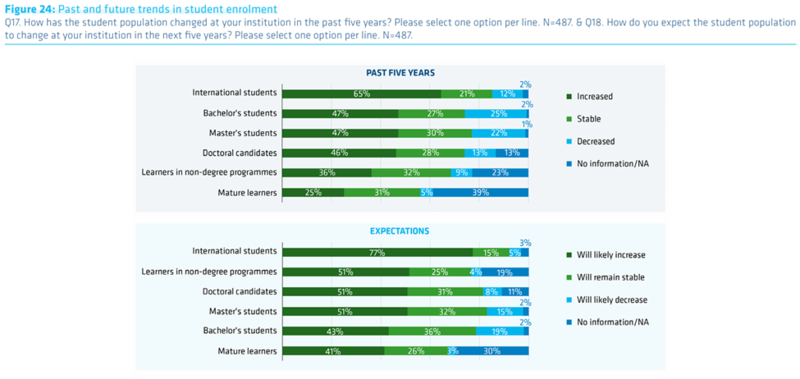
Obstacles to Funding
Another critical discovery from the report is the issue of underfunding, which is identified as a significant impediment to the enhancement of learning and teaching by 70% of institutions. Figure 6 illustrates the diverse developments that have affected the strategies of institutions over the past five years, with a particular emphasis on economic developments and digital transformation.
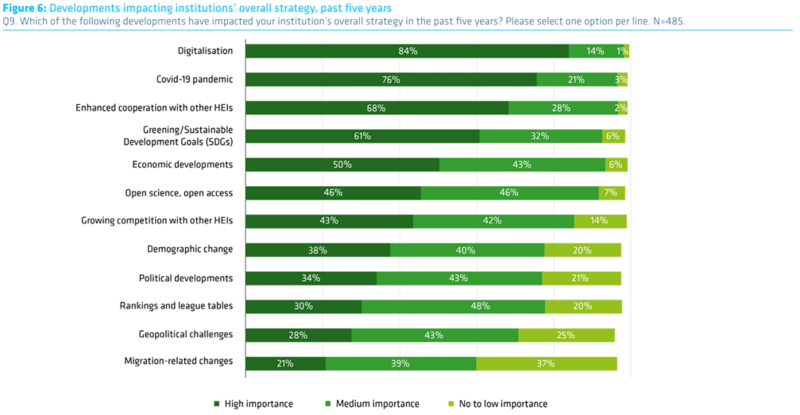
Institutional Support and Digital Transformation
Higher education institutions have encountered both opportunities and challenges as they transition to digital transformation. Figure 7 emphasizes the diverse internal policies that institutions have implemented, including accessibility enhancements, academic integrity measures, and digital infrastructure, as per the report.
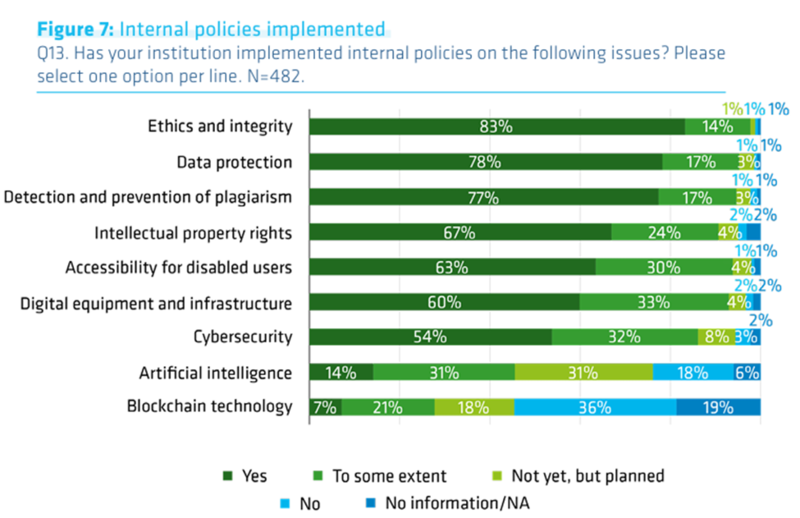
Inclusion, Diversity, and Equity
Addressing equity and diversity has emerged as a critical priority for institutions as they endeavor to become more inclusive. Institutional endeavors to establish more inclusive learning environments are illustrated in Figure 22, with an emphasis on gender balance, accessibility, and institutional support for underrepresented students.
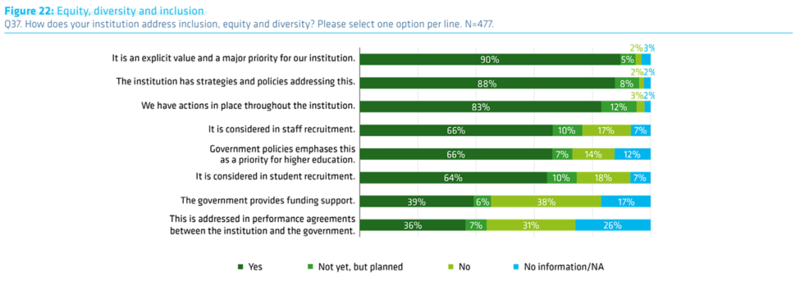
Institutional Methods of Education and Learning
Another substantial factor in enhancing the flexibility of higher education is the significance of adapting learning and instructional methods. Figure 16 illustrates the diverse methods by which institutions provide support to teaching staff, including pedagogical training, exchanges, and development programs.
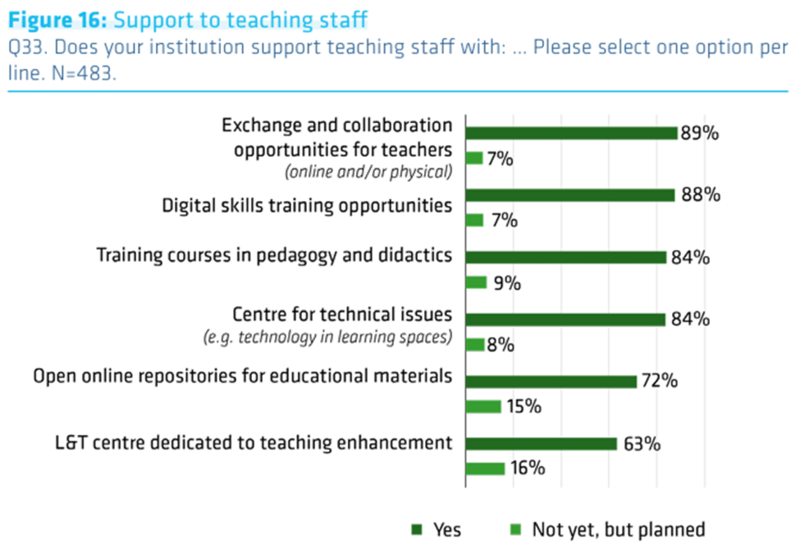
Learning that is centered around the student
Another challenge that universities must confront is the transition to student-centered learning. Figure 25 illustrates the implementation of learning outcomes in higher education institutions, illustrating the progress and obstacles associated with the transition to student-centered curricula.
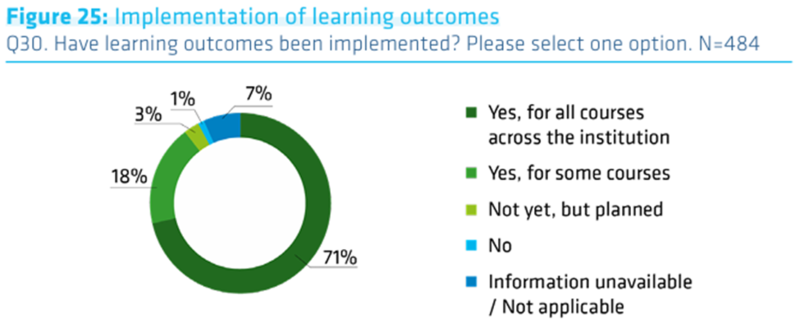
Reevaluating Higher Education
Institutions of higher education must evaluate their organizational structures and adjust to evolving requirements. Staff reductions and program closures will become inevitable if institutions fail to take action to increase revenue—an issue that is already affecting many universities.
In order to remain pertinent in a world that is becoming increasingly disrupted, universities must surmount internal resistance and adopt flexible learning. Higher education institutions are at risk of losing their financial stability and significance in the future if they do not undergo substantial change.



